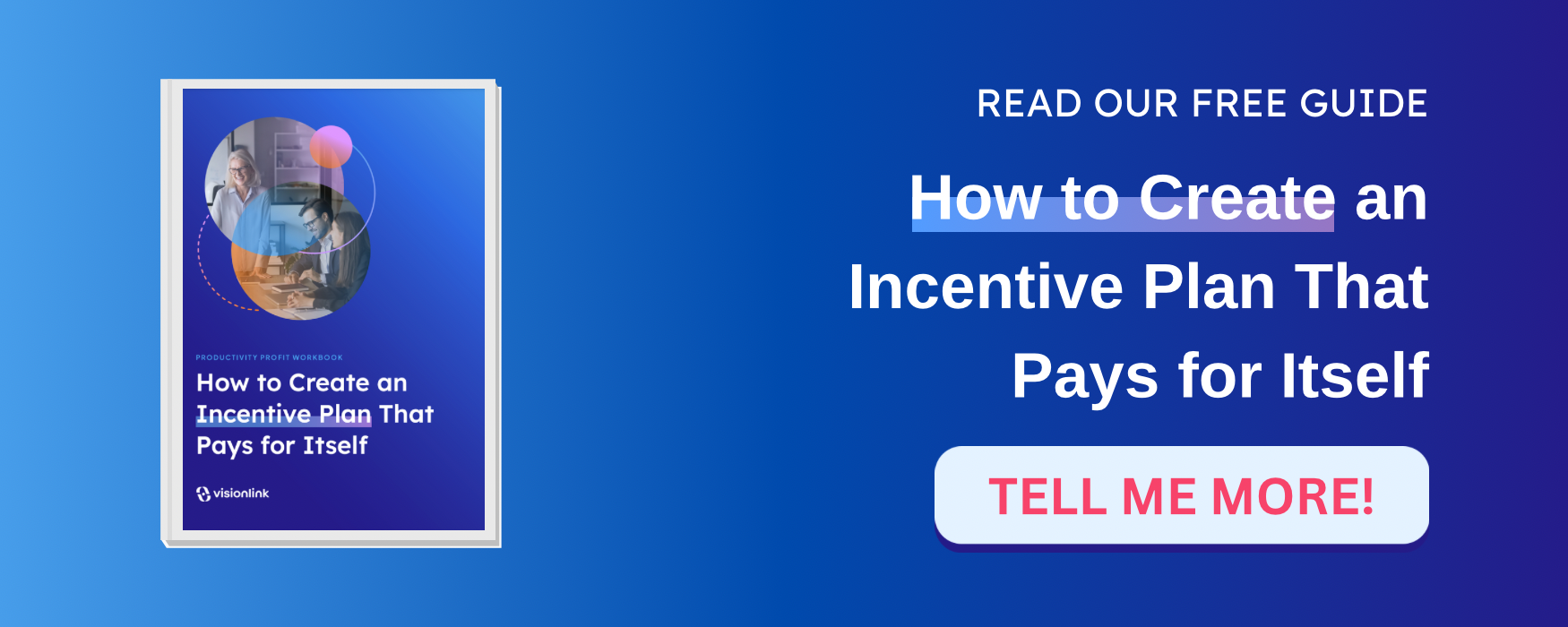
If you lead a business, that can be a difficult question to answer. Should you have both a short-term and a long-term incentive plan? Should each be the same for all employees or should they differ? If the plans are different, what distinguishes them? And how are participates for each plan determined? I could continue, but you get the idea. If you aren’t careful, you can get carried away in your approach to rewarding performance—and end up diluting your results in the process.
To answer questions like those just posed, you will need clarity about the purpose of incentive compensation. Among other things, it is to establish performance priorities. For example, most organizations need their employees to focus on achieving both annual and sustained results. In other words, they want their business model producing consistent revenue and profits each year, but they also need to see business growth (and a corresponding increase in shareholder value). Those pursuits need to be coordinated and the rewards plans supporting them must be complementary, not conflicting. You want your people to adopt a balanced approach to performance—one that doesn’t over emphasize one performance period over another. As a result, your incentive plans need to help create that balance.
Learn more about The Purpose of Incentive Compensation.
A Single Value-Sharing Philosophy
Before you can determine how many incentive plans your business should offer, you first must know what your beliefs are about rewarding performance. You need a pay philosophy. This is a written statement (document) that acts like a compensation “constitution” defining the standards that will guide your pay strategy development.
The first part of the compensation philosophy statement should articulate how your company defines value creation. It will be difficult to establish a value-sharing belief system if you haven’t first established how employee contributions to value creation are measured. This will be a little different for every company, but there needs to be a threshold that establishes the return on shareholder capital that must be reached before workforce efforts are credited for profitable gains. A compensation philosophy then should state what portion of that “value-added” will be shared with those who help produce it.
Typically, organizations will allocate a certain amount of profits (beyond the shareholder return threshold) to incentive payouts (value-sharing). Once that ceiling is reached, the company shifts to a percentage shared between employees and the company. In the philosophy statement, you need to decide what emphasis will be given to rewarding annual value creation versus sustained results.
By creating incentive plans using a value creation and sharing model, you are providing guardrails for how payouts will be earned. Because you are setting up your plan to only pay benefits once the value creation threshold has been reached, your incentive plan (value-sharing) becomes “self-financed”; you are only paying value out of the productivity profit that has been created. This allows you to provide unlimited earnings potential for your employees while protecting shareholder interests at the same time.
Once you have determined your overall value creation and sharing philosophy, the next step is to determine how much should be allocated towards short-term performance and how much for sustained results. Here, the plan design for each reward period will be driven by two key metrics. Let’s understand what those should be—and why.
Rewarding Profits and Business Growth
Most organizations end up with either too many incentive plans or too many metrics that govern how people earn a benefit from their plans—or both. There are two issues driving this. The first is the term “incentive plan” itself—which connotes a desire to reward behavior. A better term is value-sharing. The latter implies employee earnings will be tied to the wealth multiple they help create. If you create value, you will benefit financially from the value you help create. The larger the value creation the higher your earnings can go.
The second reason companies end up with too many plans or too many metrics is because they are unclear about the outcomes they should reward. They try to configure something that will apply to each person’s position or job “duties.” This kind of metric setting is virtually impossible to achieve or maintain. It confuses employees and prevents the company from creating a unified financial vision for growing the business—because everyone is focused on different measures.
In a value-sharing rewards model, there must be laser beam clarity about the central measures that will drive benefits for plan participants. There should be one core metric for short-term rewards and one for long-term. And they should be correlated.
Short-Term Value-Sharing Metric
Rewards for employee performance during a 12-month period or less should be tied to profits. That’s it. While there may be a team, department or division component, the primary driver must be profits. This means that unless a certain profit threshold is met, no one earns benefits under the plan—regardless of how well a given unit or individual performs. Employees must be unified in their understanding of the importance of driving profits and what they mean to the company’s ability to succeed.
Business leaders struggle with this at first because they worry their employees will not feel enough recognition for individual performance. Team leaders have a similar concern for their members. But these issues can be easily addressed. Plan benefits can be enhanced or diminished based on individual or team performance factors. Or Spot Bonuses can be used to reward individual efforts the moment they happen. But the central focus must be on profit. Otherwise, company leaders will find themselves making bonus payments (for example) in years the company isn’t even profitable. That’s a recipe for disaster.
Long-Term Value-Sharing Metric
Value-sharing for periods longer than 12 months should be tied to growth in business value. So, this means there must be sustained profitability. As a result, it correlates with the annual focus on profits. But it does so in a way that preserves “good” profits and prevents against “bad” profits. Let me explain.
When a company’s value-sharing approach is too focused on rewarding short-term performance, employees can end up maximizing the outcome that is going to be most beneficial to them personally, right now—this year. This can lead to activities that generate profits today at the expense of sustained profitability. I’m talking about actions that may erode a customer relationship or squeeze a supplier in an effort to maximize immediate profits—thereby, maximizing an employee's personal income for the same period.
This is at odds with the best interests of shareholders. Sure, they want profits this year—but sustainable ones. They want the company’s business model leveraged not disabled. When companies set up complementary value-sharing plans that reward both short and long-term performance, they create an insurance policy against bad profits.
There are a variety of plan types that reward business growth. Organizations should find the one that best reflects their pay philosophy and promotes sustained profitability. Most companies need help with this process, which is the role of pay design consultants.
So, how many incentive plans should your company have?
In most cases, two. One that rewards short-term performance and is tied to profits. And another that rewards long-term performance and is tied to growth in business value. Guiding both should be a single philosophy that defines value creation and how it will be shared with those who help produce it.
Now that you know the answer to the title question, make the necessary changes to bring your incentive approach in line with a value-sharing model that balances rewards for both short and long-term performance and protects shareholder’s interests in the process.
Ready to Get Started?
When it comes to building a compensation strategy, you can trust that VisionLink knows what works and what doesn’t. We are ready to share that knowledge with you.
Stay Connected
Receive free, ongoing access to updates on compensation and talent trends, reports, events, and more.


